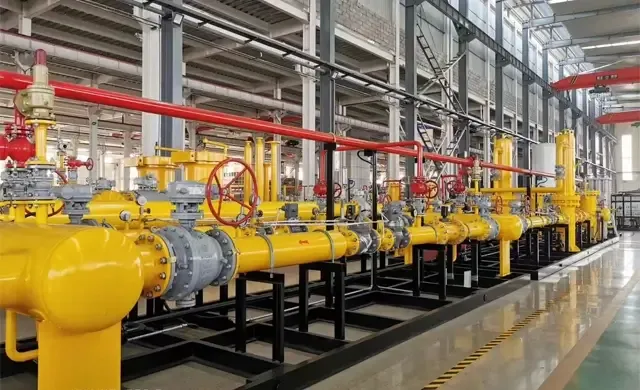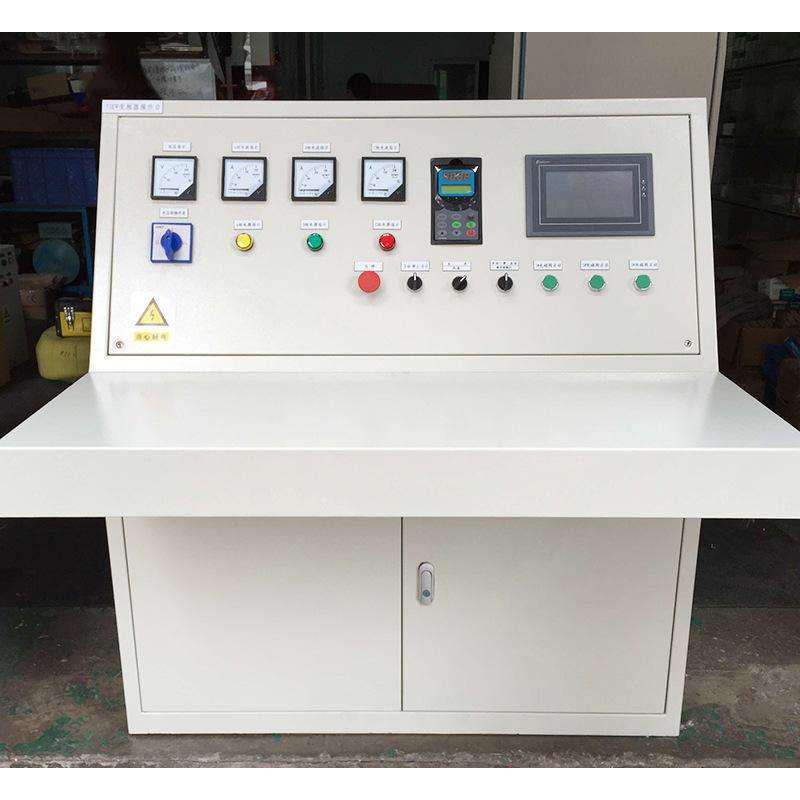
Jul . 04, 2025 09:51
Back to list
High-Performance Natural Gas Pressure Regulator – Reliable 2 PSI & Medium Pressure Solutions
- Introduction and significance of natural gas pressure regulator
s - Fundamentals and technical advancements in pressure regulation
- Comparative analysis of industry-leading manufacturers
- Customization strategies for various industrial and residential needs
- Application-focused case studies demonstrating performance
- Comprehensive market trends, technical data, and regulatory insights
- Conclusion: The future of natural gas pressure regulator technology

(natural gas pressure regulator)
Understanding the Natural Gas Pressure Regulator
Natural gas pressure regulators play an indispensable role across industrial, commercial, and residential applications. Their primary function is to maintain a consistent downstream pressure regardless of fluctuation in inlet pressure or variable gas demand, ensuring system efficiency and safety. According to the International Energy Agency, natural gas accounted for 24% of global energy consumption in 2023, driving demand for advanced regulation technologies. As modern grids scale and diversify, maintaining optimal pressure has become more complex—particularly with the rise of medium pressure natural gas regulator systems and increased adoption of 2 psi solutions for high-efficiency appliances. A well-calibrated regulator is vital for reducing leakage risks, protecting downstream equipment, and meeting increasingly stringent safety and environmental standards.
Technical Foundations and Innovations in Pressure Control
At its core, a natural gas pressure regulator balances supply and demand, modulating flow and pressure through diaphragm-actuated valves and springs. Conventional systems often struggle with pressure spikes and droop—settings where output diverges from target pressures under changing flow rates. Advances in control algorithms, materials, and sensor integration now enable far tighter regulation, with accuracy improving from ±10% to as little as ±1% in modern devices.
For example, medium pressure natural gas regulator designs utilize high-flow relief valves, dynamic pilot control, and corrosion-resistant alloys to extend lifetimes beyond 300,000 operational cycles—doubling the durability versus regulators from the early 2000s. Moreover, the use of integrated digital diagnostics allows for real-time monitoring of wear, leak-by detection, and predictive maintenance scheduling, enhancing both safety and cost efficiency.
The specialized implementation of the natural gas pressure regulator 2 psi has boosted energy efficiency by 6-10% over traditional low-pressure systems, particularly in large-scale residential complexes and commercial kitchens where higher-pressure supply enables the use of compact, performance-optimized appliances.
Industry Manufacturer Comparison: Data-Driven Evaluation
Selecting the appropriate pressure regulator requires a deep understanding of both technical performance and manufacturer reliability. The table below compares offerings from major market players based on accuracy, capacity, service life, diagnostic capabilities, and price point:
| Manufacturer | Model | Pressure Range (psi) | Regulation Accuracy | Max Flow Rate (SCFH) | Expected Service Life (cycles) | Digital Diagnostics | Avg. Price (USD) |
|---|---|---|---|---|---|---|---|
| Emerson | Fisher 99 | 0.5-25 | ±1.1% | 110,000 | 350,000 | Yes | 1,400 |
| Honeywell | Beeper MP | 0.75-15 | ±2.4% | 98,000 | 320,000 | Yes | 1,150 |
| Pietro Fiorentini | GAS 128 | 1-20 | ±1.8% | 102,000 | 315,000 | No | 1,040 |
| Generant | GPRV-2 | 2-7 | ±1.6% | 85,000 | 340,000 | No | 910 |
| Maxitrol | 259D-12A2 | 2.5-12 | ±2.2% | 79,000 | 298,000 | No | 830 |
The data highlights a clear correlation between price and both regulatory performance and integrated digital features. Emerson and Honeywell lead on accuracy and longevity, while Generant and Maxitrol provide cost-effective solutions for smaller applications. Selection should be aligned with the specific medium-pressure or low-pressure natural gas environment, end-use requirements, and future-proofing via diagnostics.
Tailored Solutions for Diverse Requirements
Not all installations require the same gas pressure control strategy. Commercial bakeries, for instance, often operate continuous high-BTU burners, while hospitals need fail-safe redundancy for critical infrastructure. By customizing regulator specifications—ranging from orifice size, outlet pressure settings, relief valve integration, and material choices—providers successfully match unique site needs.
For example, a custom medium pressure natural gas regulator solution may use a double-diaphragm system with an automatic switchover for redundant supply, combined with surge-absorbing seats to handle rapid demand fluctuations. Conversely, residential upgrades from a 7" WC (water column) to natural gas pressure regulator 2 psi systems involve recalibrating appliance valves and ensuring robust venting to optimize performance.
The use of additive manufacturing is further enabling bespoke geometries, reducing lead times by 25% for project-specific orders. Additionally, remote commissioning and self-tuning controllers are pushing the boundaries of what can be achieved in both brownfield and new installations.
Performance-Driven Application Case Studies
Industrial Power Plant Retrofit: In 2022, a 400 MW co-generation facility adopted high-capacity, medium pressure natural gas regulator units configured with redundant soft-seat shutoff and digital condition monitoring. The retrofit extended maintenance intervals from 16 to 28 months and reduced energy waste by 9%, saving $340,000 annually.
Large-Scale Residential Upgrade: When a metropolitan housing development transitioned 4000 apartments to natural gas pressure regulator 2 psi systems, average utility costs dropped by 7% with a corresponding emissions reduction of 510 metric tons of CO2 annually. The pressure stability improved from ±11% to ±1.3% across all units.
Commercial Food Production: A high-volume bakery replaced outdated spring-loaded regulators with pilot-operated models. Delivery pressure stayed within ±0.9% of the setpoint—cutting batch rejection rates by 17% due to improved oven temperature control.
Data-Driven Insights Table:
| Application Type | Before Upgrade | After Upgrade | Key Benefit |
|---|---|---|---|
| Power Plant | 16 month maintenance; ±4.8% pressure fluctuation | 28 month maintenance; ±1.1% fluctuation | $340,000/year savings |
| Residential Buildings | Utility cost baseline; ±11% pressure | 7% cost saving; ±1.3% pressure | 510 MT CO2 annual reduction |
| Commercial Bakery | Batch rejection rate 9%; ±3.5% set point drift | Rejection rate 7.5%; ±0.9% drift | Consistent quality, lower waste |
These real-world deployments underline not only the economic payback but also the operational and environmental improvements possible with correctly specified pressure control.
Insights: Market Trends, Technical Challenges, and Compliance
The annual growth rate for natural gas pressure regulator installations is expected to exceed 6.8% through 2027, driven by expanding gas infrastructure, the shift from coal to natural gas, and regulatory mandates for leak minimization. Technical challenges remain, particularly in adapting to fluctuating LNG compositions, addressing transient surge loads, and integrating cyber-physical security for diagnostics.
International technical standards—including EN 334/13785, API 526, and ASME B31.8—define strict requirements for performance consistency, emissions containment, and traceability. Increasingly, North American and European codes call for automatic lockup, overpressure protection, and force-balanced valve designs. Cybersecurity considerations now dictate secure firmware and encrypted remote monitoring for digital-ready devices.
Environmental priorities are manifest in adoption rates for high-efficiency, medium pressure natural gas regulator units. Projects targeting Net Zero buildings or decarbonized industrial operations frequently specify digital, ultra-precise control systems to maximize fuel savings and minimize fugitive emissions.
The Future of the Natural Gas Pressure Regulator
Looking ahead, natural gas pressure regulators are set to integrate further automation and connectivity, leveraging the Industrial Internet of Things (IIoT) to allow seamless, predictive control. Smart sensors with built-in anomaly detection, auto-adjusting setpoints, and blockchain-based maintenance records will become hallmarks of advanced systems.
As adoption increases across distributed energy resources and smart networks, manufacturers must balance rapid innovation with reliability and code compliance. The role of the natural gas pressure regulator will continue to expand—to not only ensure safe pressures, but to optimize energy utilization, minimize carbon footprints, and protect critical infrastructure worldwide. Ongoing advances in mechatronics, materials science, and digital diagnostics will define the next generation of these vital devices, ensuring their relevance and performance in an increasingly complex energy ecosystem.

(natural gas pressure regulator)
FAQS on natural gas pressure regulator
Q: What is a natural gas pressure regulator?
A: A natural gas pressure regulator is a device that controls and maintains the pressure of gas flowing from the supply line to appliances. It ensures that the gas pressure remains stable and safe for usage. Without it, the gas flow could be too high or too low for proper operation.Q: When should I use a natural gas pressure regulator 2 psi?
A: A 2 psi natural gas pressure regulator is typically used in systems designed for higher pressure distribution, such as in medium- or large-sized residential or commercial applications. It reduces incoming gas pressure to a manageable level for appliances. Always consult system requirements for the correct regulator.Q: What makes a medium pressure natural gas regulator different?
A: A medium pressure natural gas regulator is designed to handle incoming gas pressures above standard low-pressure ranges, usually between 0.5 psi and 5 psi. It transitions medium pressure gas to a safer, lower output pressure. This type is used where higher supply pressures are present before reaching end-use equipment.Q: How do I know if my natural gas pressure regulator is working properly?
A: Signs of a functioning regulator include steady appliance operation and the absence of gas smell or noise near the regulator. If you experience irregular flame heights, unusual sounds, or smell gas, the regulator might be faulty. In such cases, contact a licensed technician immediately.Q: Can I install a natural gas pressure regulator by myself?
A: Installation of a natural gas pressure regulator should always be done by a qualified professional or licensed technician. Incorrect installation can lead to dangerous leaks or improper gas flow. Safety and adherence to local codes are critical requirements.Latest news
-
What Role Do Pressure Reducers Play in Industrial Systems?NewsJun.12,2025
-
What Role Do Gas Valves Play in Industrial Safety and Functionality?NewsJun.12,2025
-
Key Components in Energy Management and Temperature ControlNewsJun.12,2025
-
Integral Components in Mechanical and Energy SystemsNewsJun.12,2025
-
How Do Industrial Valves and Filters Ensure System Safety and Efficiency?NewsJun.12,2025
-
Essential Components for Industrial Fluid Management: Valves and SystemsNewsJun.12,2025

